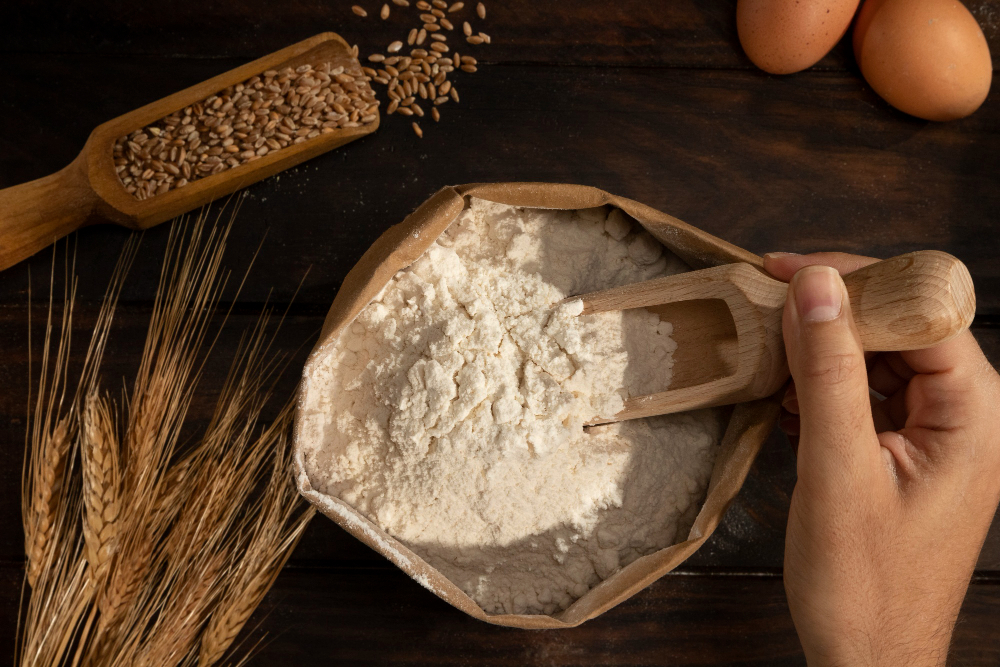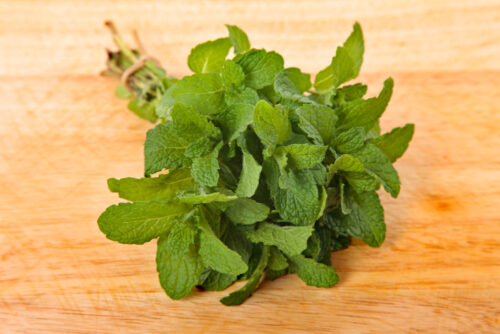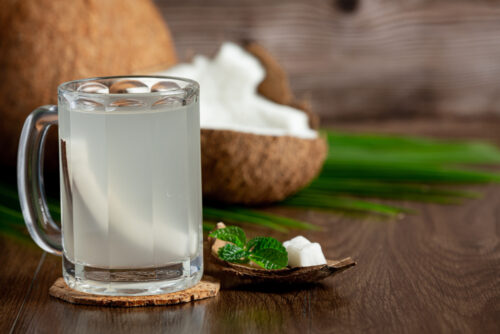No Yeast? No Problem! Discover the best yeast substitutes & transform your baking with The FoodNom.
Running out of yeast mid-recipe can feel like a disaster. You’re halfway through prepping your dough, and suddenly, you’re missing the one ingredient that makes it all rise, literally. Or maybe you’re avoiding yeast for dietary reasons, health concerns, or just to experiment with new flavors.
Whatever the reason, don’t panic. If you are thinking what can I use instead of yeast, we have shortlisted some of the best alternatives. Yeast replacements are here to save the day, and with the right know-how, you can still achieve fluffy, flavorful, and perfectly textured baked goods.
In this ultimate guide, we’ll explore the best substitutes for yeast, how they work, and how The FoodNom can elevate your yeast-free baking experience.
Why Do We Need Yeast Substitutes?
Yeast is a powerhouse in baking. It ferments sugars, producing carbon dioxide that makes dough rise while enhancing flavor and texture. But there are plenty of reasons to seek alternatives:
- Last-Minute Emergencies: You’re out of yeast and can’t make a store run.
- Dietary Restrictions: Some people avoid yeast due to allergies, vegan diets, or low-FODMAP needs.
- Health-Conscious Choices: Processed yeast isn’t for everyone, and natural substitutes like sourdough starters offer gut-friendly benefits.
- Time-Saving: Yeast requires proofing and rising time, which isn’t ideal for quick recipes.
Whatever your reason, yeast substitutes will help you achieve similar results without compromising on taste or texture.
The Science of Yeast in Baking
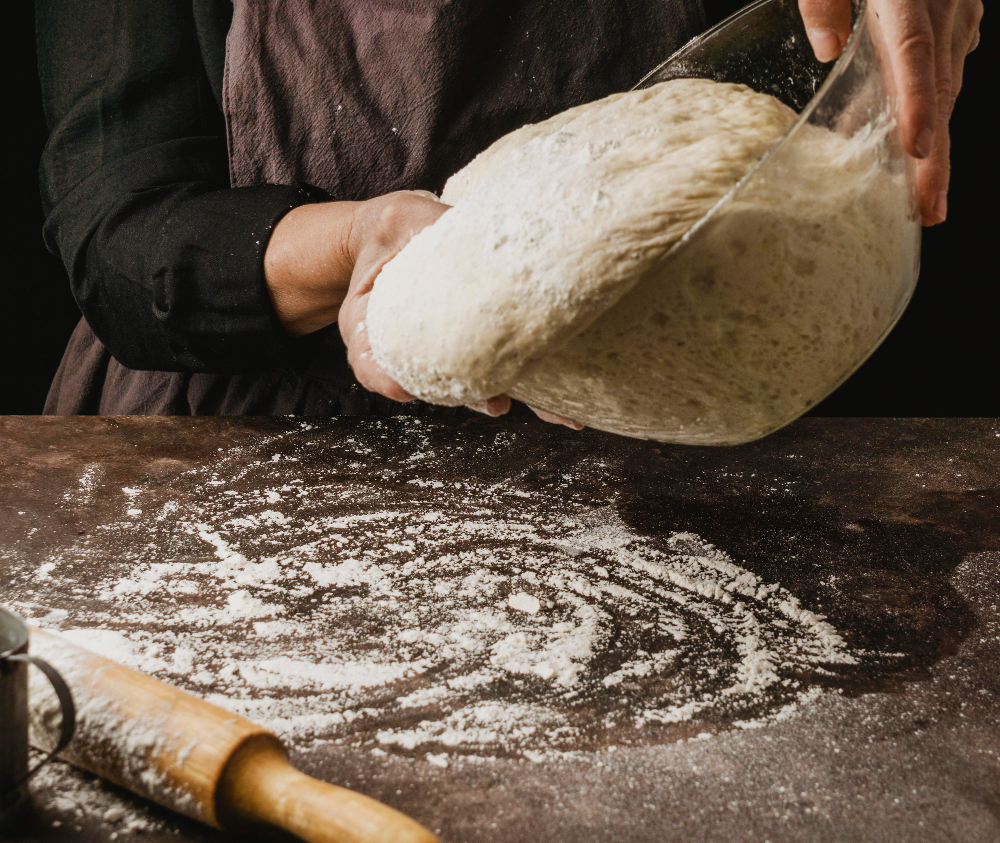
Before discussing substitutes, let’s understand yeast. Yeast is a living organism that ferments sugars in dough, producing carbon dioxide gas. This gas creates air pockets, making bread rise and giving it that soft, fluffy texture. Yeast also contributes to the flavor, especially in long-fermented recipes like sourdough.
When replacing yeast, the goal is to mimic its leavening effect (the rise) and, in some cases, its flavor. While no substitute is a perfect match, the right alternative will work wonders, depending on your recipe.
Is There A Substitute For Yeast?
For now, the answer is, yes. We’ll explain the best yeast substitutes, how they work, and when to use them.
1. Baking Powder & Baking Soda
How It Works: These chemical leaveners create carbon dioxide through acid-base reactions. Baking powder contains both an acid and a base while baking soda needs an acidic ingredient (like vinegar or buttermilk) to activate.
Ratio: Replace 1 tsp of yeast with 1 tsp of baking powder or ½ tsp baking soda + ½ tsp acid (e.g., vinegar).
Best For: Quick breads, pancakes, muffins, and cakes.
Pro Tip: Baking powder doesn’t require rise time, making it perfect for fast recipes.
2. Sourdough Starter
How It Works: Sourdough starter is a natural leavening agent made from wild yeast and lactobacilli. It ferments dough, creating a tangy flavor and airy texture.
Ratio: Replace 1 packet of yeast with 1 cup of active sourdough starter. Adjust the liquid and flour in your recipe accordingly.
Best For: Artisan breads, pizza dough, and recipes where flavor is key.
Pro Tip: Sourdough takes longer to rise, so plan ahead.
3. Buttermilk or Yogurt
How It Works: The acidity in buttermilk or yogurt reacts with baking soda to create lift.
Ratio: Replace 1 tsp of yeast with 1 cup of buttermilk or yogurt + ½ tsp baking soda.
Best For: Biscuits, cakes, and tender doughs.
Pro Tip: For vegan options, use plant-based yogurt or milk with a splash of vinegar.
4. Club Soda

How It Works: The carbonation in club soda adds air bubbles to the dough, creating a light texture.
Ratio: Replace the liquid in your recipe with equal beer or club soda.
Best For: Savory breads, pretzels, and batters.
Pro Tip: Beer adds flavor, so choose one that complements your recipe.
5. Other Creative Substitutes
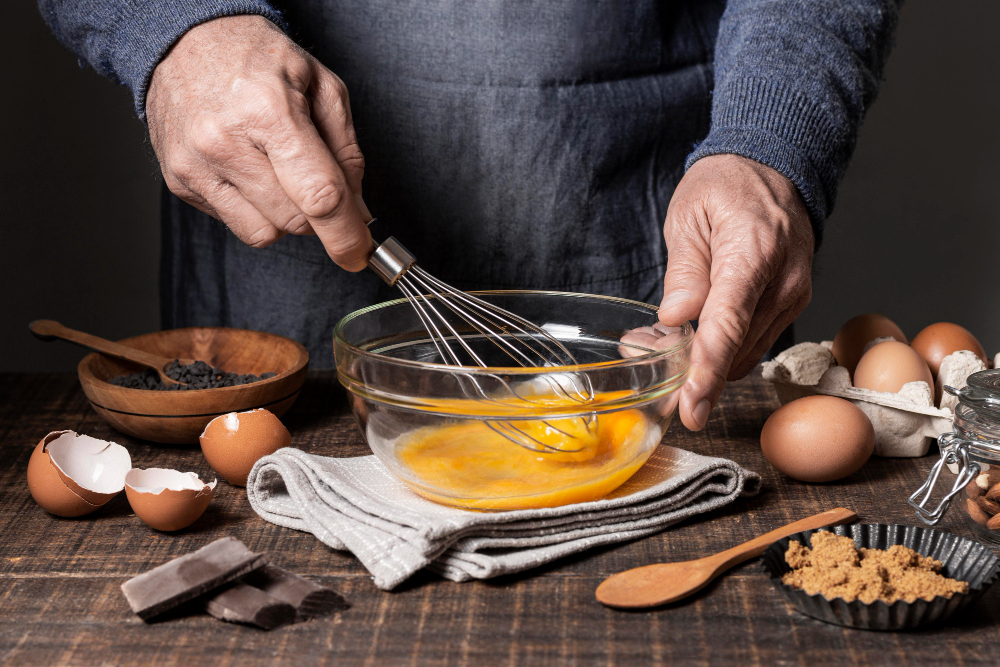
- Kefir: Similar to buttermilk, with added probiotics.
- Vinegar + Milk: A quick DIY buttermilk substitute.
- Egg Whites or Whipped Aquafaba: Great for adding fluffiness to cakes and bread.
How to Choose the Right Substitute
Not all substitutes work for every recipe. Here’s a quick guide to help you decide:
- For Bread: Sourdough starter or club soda for flavor and texture.
- For Cakes & Muffins: Baking powder or buttermilk for a light, tender crumb.
- For Vegan Recipes: Aquafaba or vinegar + plant milk.
- For Gluten-Free Baking: Baking soda + starch-based recipes.
Health Benefits of Yeast and Its Substitutes
While yeast has been a cornerstone in baking for centuries, understanding its health benefits and exploring healthier alternatives can enhance our overall well-being. We’re now delving into the advantages of both yeast and its substitutes, focusing on gut health, nutritional value, and convenience.
Health Benefits of Yeast
Yeast, particularly baker’s yeast, contributes significantly to bread’s nutritional value. It is rich in fiber, phosphorus, potassium, iron, magnesium, zinc, and B vitamins like folate and niacin. Yeast also provides antioxidants that help combat free radicals, potentially slowing down aging and supporting immune function.
Additionally, yeast-leavened bread can improve gut health by promoting beneficial gut microbiota, as seen in studies involving yeast-leavened bread with fermented ingredients.
Health Benefits of Yeast Substitutes
Switching to yeast substitutes can offer several health advantages:
- Gut Health: Sourdough starters, which are natural yeast substitutes, contain probiotics that support digestion and improve gut health. The fermentation process in sourdough breaks down gluten and phytic acid, making nutrients more bioavailable and aiding digestion.
- Reduced Bloating: Low-FODMAP options like baking powder are gentler on sensitive stomachs, reducing bloating and discomfort associated with yeast fermentation. This makes baking powder a suitable choice for those with digestive issues.
- Faster Prep, Beautiful Presentations: Yeast substitutes often eliminate the need for proofing or rising time, allowing for quicker preparation and lovely presentation. This convenience is particularly beneficial for busy schedules, ensuring that healthier baking options remain accessible.
Nutritional Yeast: A Healthier Alternative
Nutritional yeast, often used as a vegan substitute for cheese, offers a wealth of health benefits. It is rich in protein, vitamins, and minerals, including all nine essential amino acids, making it a complete protein source. Nutritional yeast supports heart health by lowering cholesterol levels and regulating blood sugar. Additionally, it boosts immune function due to its high content of beta-glucan, a fiber that activates immune cells.
Incorporating these alternatives into your baking routine can enhance the nutritional value of your baked goods and provide a more convenient and healthier approach to traditional yeast-based recipes. Whether you choose sourdough, baking powder, or nutritional yeast, each option offers unique benefits that can improve your overall health and well-being.
FAQs: Your Yeast Substitute Questions, Answered
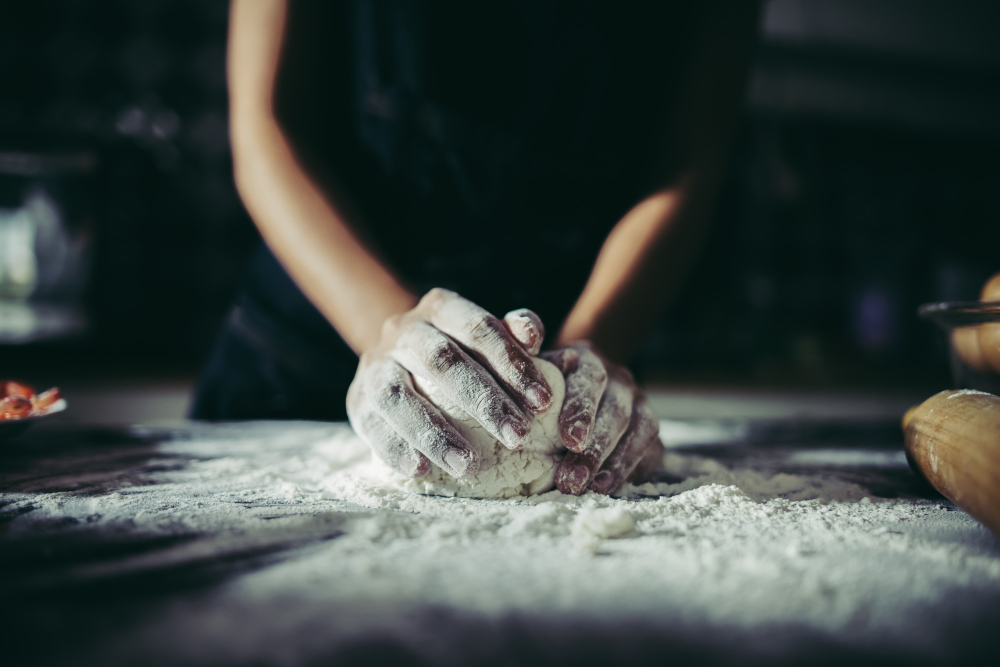
Whether a seasoned baker or a curious beginner, this guide helps you bake smarter, healthier, and more creatively. Have a look at some of the frequently asked questions about yeast substitutes:
Q: Can I substitute yeast 1:1 with baking powder?
A: Not exactly. Baking powder works differently, so follow the recommended ratios for best results.
Q: What if my dough doesn’t rise?
A: Check your substitute ratios and ensure your ingredients are fresh. To troubleshoot, visit FoodNom’s video library.
Q: Are substitutes cheaper than yeast?
A: Yes! Baking powder and soda are often more affordable and versatile.
Q: Can I use sourdough starter as a substitute for instant yeast?
A: You can use a sourdough starter to replace instant yeast. Generally, 1 cup of active sourdough starter should replace 2 teaspoons of instant yeast. Just remember to adjust the liquid and flour in your recipe accordingly, and be prepared for longer rise times.
Q: How do I know if my baking powder is still good to use?
A: To test the freshness of your baking powder, add a teaspoon to a small amount of hot water. If it bubbles vigorously, it’s still active and good to use. If there’s little to no reaction, it’s time to replace it.
Q: Can I substitute yeast in recipes that require fermentation, like pizza dough?
A: You can use substitutes like baking powder or sourdough starter, but the texture and flavor will differ. Baking powder will create a quicker rise, while sourdough will provide a unique flavor profile but requires more time for fermentation.
Q: What happens if I use too much baking soda as a yeast substitute?
A: Using too much baking soda can leave your baked goods with a bitter taste and cause them to rise too quickly, resulting in a dense texture. Always follow the recommended ratios for best results.
Q: Are there any gluten-free substitutes for yeast?
A: You can use gluten-free baking powder or a combination of baking soda and vinegar as a leavening agent in gluten-free recipes. Additionally, some gluten-free flours, like almond or coconut flour, can be combined with baking soda to achieve a good rise.
Conclusion: Embrace Flexible, Healthier Baking with The FoodNom
Running out of yeast doesn’t mean your baking dreams are over. With the right substitutes, you can create delicious, fluffy, and flavorful baked goods without yeast. Whether you’re experimenting with sourdough, whipping up quick bread, or exploring vegan options, there’s a substitute for every recipe and lifestyle.
Let’s bake smarter, healthier, and more creatively together. Explore nature’s goodness with The FoodNom, your trusted partner in the kitchen, who helps you solve baking and hydration challenges with ease.

